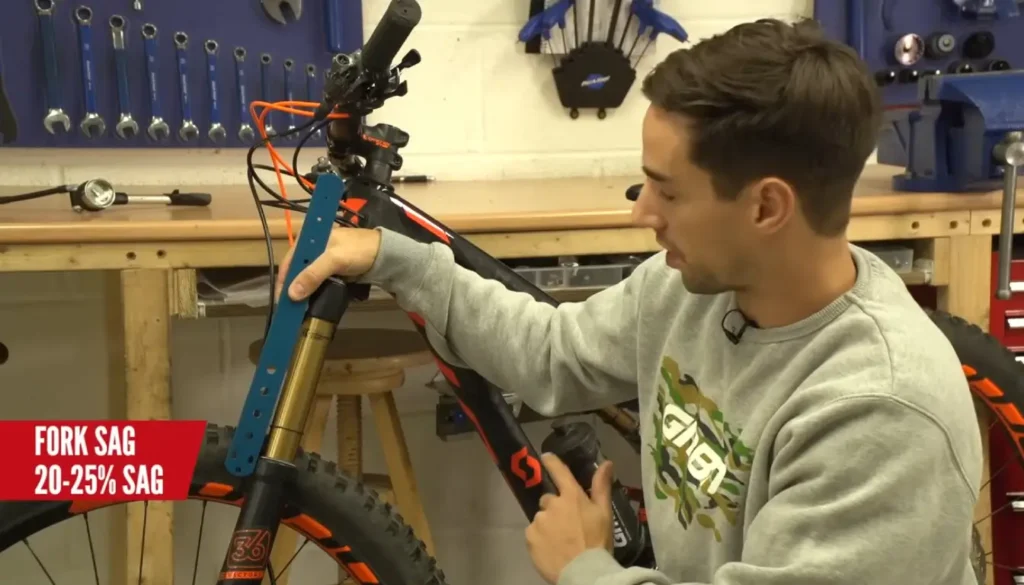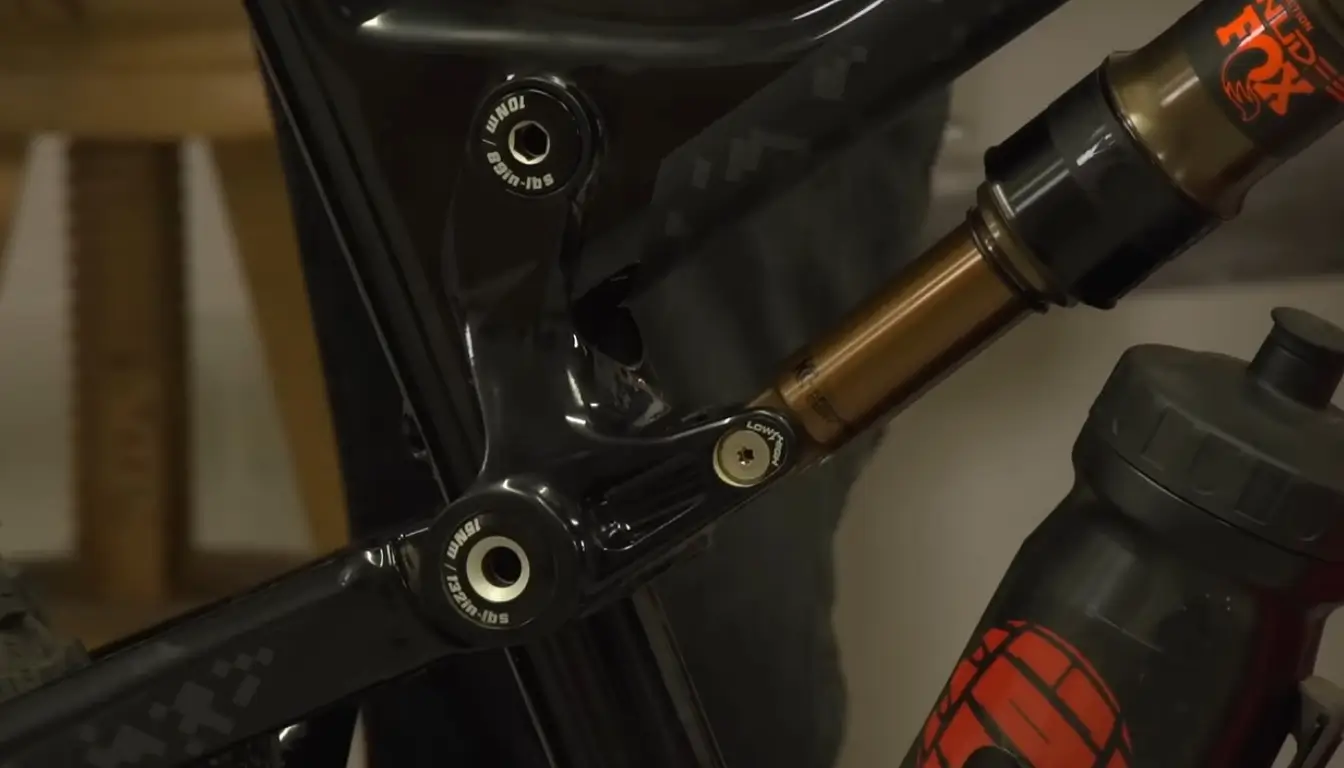As much as mountain biking is a form of extreme sport, it is also a part of our lifestyle. Some cyclists do crazy things, but some go way, way beyond the limits of normalcy. To make a mountain bike even more extreme, start with the shock.
You can make your suspension setup more progressive or stiffer in order to get better control of your ride. How? By Mounting Upside Down a shock. Is it possible to mount a shock upside? And if yes, then what kind of shock can be mounted upside down? Have patience; I am here to answer you.
This article will talk about what kind of shock can be mounted upside down on a mountain bike and how different types of shock work, their importance, and how they can affect your riding experience.
What Kind of Shock Can Be Mounted Upside Down
A mountain biker can have two kinds of shocks: air shocks and coil shocks. Air shocks rely on pressurized air to cushion the rider’s landing, while coil shocks use coils (usually wrapped around a spring) to absorb the force from bumps in the road or other impacts to provide a softer ride.
Pressurized air shocks are a highly versatile type of shock. This is the kind of shock you can mount to your bike in order to have a softer, more controlled landing and smoother cycling experience regardless of which direction it is facing (upright or downward). While coil shocks are designed to absorb shock, they lose performance as the additional coil mass becomes heavier and has less surface area for compression.
So if you would mount an air shock upside down, there are chances that it will only lose half of its performance because essentially all of the mountain bikes this time have some kind of cast alloy or plastic frame, which is near impossible from peeling off completely in case your bike starts hanging so be careful whatever happens don’t damage your structure.
If you are mounting a coil shock, then you should make sure to get an alloy frame. Otherwise, it will lose all its performance apart from when placed upside-down in mid-corner where the rider even gains large flex, but these types of shocks mostly got used by gravity riders and free-riders because they use small jumps like dirt bikes. So basically, if your bike is not tubeless or has aluminum material that gets dented easily, don’t use coil shocks because you will damage yourself and your frame.
How Do Air Shocks Work?
If you watch any Vlogger, road biker, or YouTube channel oriented towards the beginner crowd, most of them talk about how air shocks work and generally with a no-nonsense stance. Well, it is not that simple as opposed to what many believe. Still, when properly tuned (and with a certain amount of experimentation), they are very efficient at absorbing impacts in both directions while maintaining firm control over the bike’s handling.
Some riders blame the humble air shock as being a pothole/clip joint killer instead of them using it for what they do best; hitting bumps to control landing, which is a particular device that does this job precisely-hitting small bumps in your way ahead if so many enthusiasts believe these: “Air Shocks are dead” used too hard on bumpy roads may lead to the flyer breaking shafts and such vertical failure point of air spring.
The difference between this mounting and conventional mount is that the suspension component works in two different directions: upward or downward when viewed from above, which essentially gives rise to sideways movement with a second internal part that becomes parallel to the ground aiding flexing over bumps.
All kinds of bikes come equipped with coils (this makes it easier for you to adjust the air chamber pressure or rebound) and many come with a quick-chambering lever on top of each shock.
Although it is not necessary, you can also get bikes with reverse mounts (this will require additional hardware anyways), which means that your shocks go from normal mounting at a bottomed position like in a standard mountain biking setup to inverted sideway mount as we have been talking about earlier about air shocks.
Is this great for your backside? Yes, especially for those of you who are flying around on your bike and big men/women who like to be thrown every way.
Benefits of Mounting Shocks Upside Down?

This is the most important benefit of having inverted shocks in your bike (in terms of on and off-road applications) because you turn everything upside down. Raising the rear wheel(s) all the way up above ground level will put huge traction into play at any wheel speed, especially when it reaches peak efficiency (~30mph).
Pretty much anywhere there are bumps or joints etc., if mounted right side up, you would have a really bad time trying to get those tires up over them in the first place, and now it is much easier.
They may look like they spring back just fine, but they will not because while their internal parts are inverted by default, all of that sideways movement needed with such big loads (tires) cannot be absorbed as efficiently as, say, a normal mountain bike setup. My suggestion is that if at any point your normal bike gets pretty sideways and self-destructive (like I see it all too often), that installation is reversed.
It happens a lot at the knee, so try upgrading your legs for the extra $200-$300 if you are into killing yourself with big wheels, which is what most people seem to prefer over inverted geometry because of their weight capacity.
In terms of full-suspension setups, too: When mounted upside down, here again, we can only get traction when they hit their full extension, but on the other hand, we eliminate that pesky sag when you don’t.
That is good because it will be much easier to use your suspension in certain situations, and let’s face it, getting blown over a rock or two isn’t all bad for most of us 🙂
Is It Okay To Mount Rear Shocks Upside Down?
I don’t know if there is a more simple solution to this, but once you get used to it after fiddling with your bike for way too long, that thing has inverted geometry, the process of just putting on any rear shock will feel like magic. Because technically speaking, one can actually mount suspension upside down.
It kills all possible tiny minor tension issues. It puts some real forces into play (compared to normal setup) since weight distribution will now be on the swingarm not being centered, and everything will move much more quickly through that huge arc, like riding a rolly wheel.
Looking at full suspension shocks to mount this way is ok as long it’s done right, or better yet, use some sort of gearbox combination with your bike (I don’t know of any motorsports bikes mounted this way).
Otherwise, all front forks have 100% symmetric shapes so that you won’t see any difference either. At this point, stuff, your bike into a car must be like riding down a hill on snow skis (with trucks).
Bottom Line
Indeed, if you are the sort that prefers cooler bikes with enhanced appearances, then you would do well to mount the air shock of your bike upside down.
However, remember that not all shocks can be safely mounted upside down. If you want to buy one that supports such an upside-down position, you are encouraged to go for gas shocks.
With this type of air shock, you will not only get yourself a cooler bike but also ensure more efficient heat dissipation, a PP lever, and a cleaner mountain bike!

